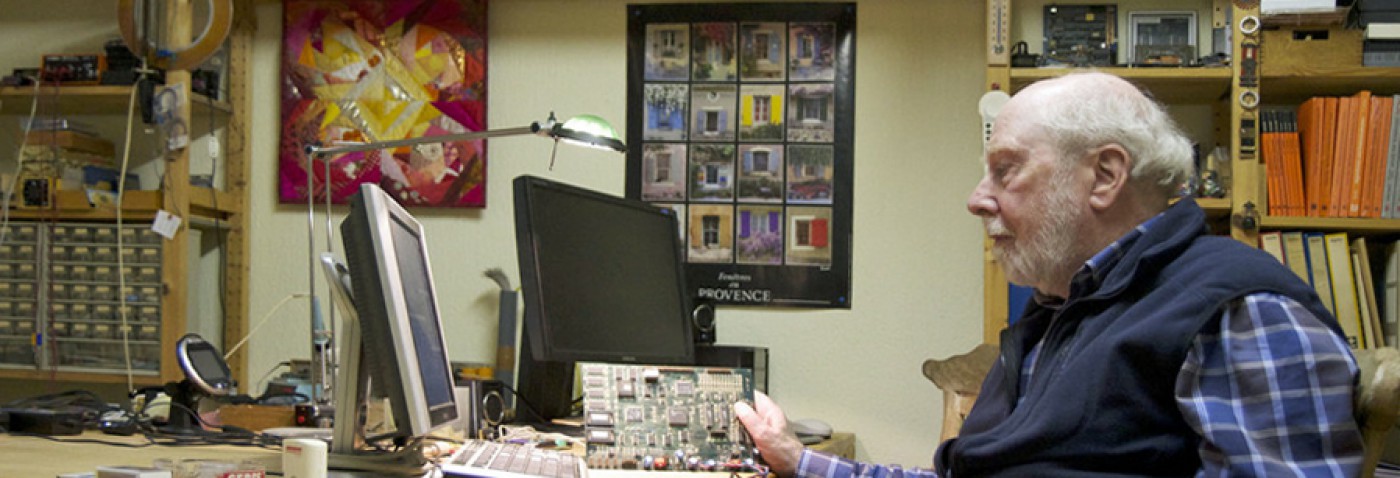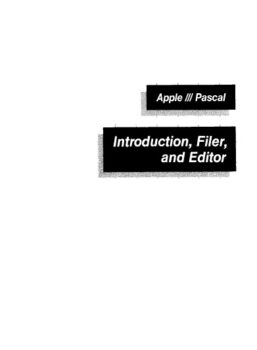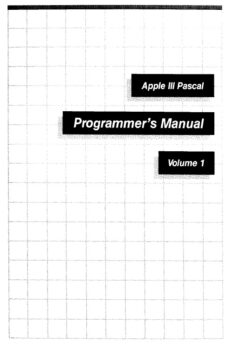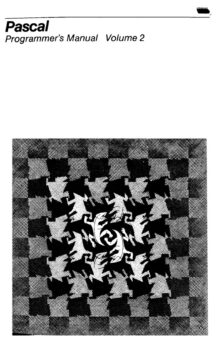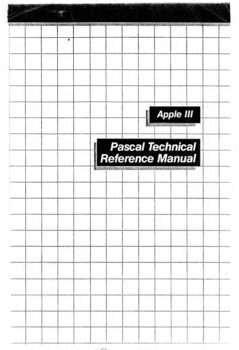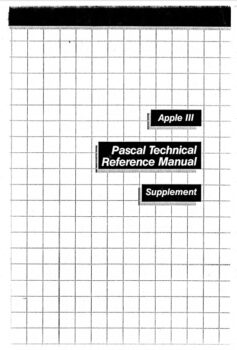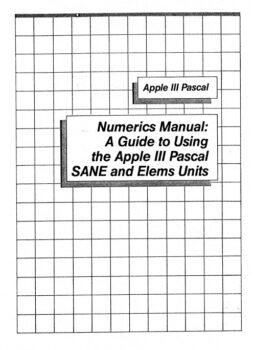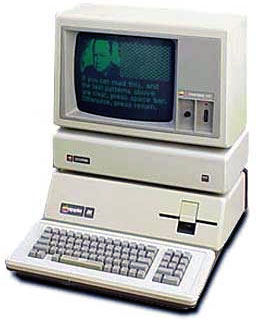 When Apple developed its Apple /// computer (1980 – 1985, 6502 CPU, 2 MHZ), it developed most of its software for this machine with Pascal.
When Apple developed its Apple /// computer (1980 – 1985, 6502 CPU, 2 MHZ), it developed most of its software for this machine with Pascal.
Apple used the Apple ][ Pascal system to create the Apple /// Pascal system. As such, /// Pascal generated P-Codes for a stack-based architecture. The ///’s Pascal language syntax was extended (e. g. otherwise clause in case statements) and like Apple ][ Pascal also supported separate program units. Access to the ///’s native 6502-based operating system, SOS (Sophisticated Operating System, or Sara’s OS), also existed via a special Pascal unit called SOSIO. This OS unit also allowed programmers access to the ///’s larger memory, 256k bytes vs. 64k bytes for the ][ computer.
Apple produced several versions of Apple /// Pascal: 1. 0, 1. 1, 1. 2, 2.0.
Version 2.0 of /// Pascal was unique in that it came with extensive technical documentation called the /// Pascal Workbench and consisted of around 1,000 pages. Version 2. 0’s Pascal compiler also produced a compilation listing consisting of the generated P-Code interleaved with the Pascal source code lines. /// Pascal also supported via a conditional compilation directive the compilation of Apple ][ Pascal programs and produced Apple ][ format code files.
Documentation for the /// Pascal system was excellent. This included a language manual, an operating system manual, and a very detailed runtime architecture manual which also listed all the P-Codes.
For /// Pascal Apple developed a very sophisticated floating-point implementation called SANE (Standard Apple Numeric Environment). SANE was based upon the IEEE floating-point standard. /// Pascal versions 1.0 and 1.1 supported only 4 byte REAL numbers, version 1.2 supported the higher quality 8 byte EXTENDED numbers. SANE went on to become the floating-point engine for Apple’s Lisa and Macintosh computers.
Most of Apple’s software for the /// was developed with the Pascal system. This included the System Utility Program and Backup ///.
The key players for Apple /// Pascal were Ira Rubin and Al Hoffmann. Support for /// Pascal ended when Apple discontinued the /// computer in 1985. From this date onwards Apple seems to have ended its involvement with Pascal which generated P-Code, opting
instead to deal fully with native code generators.
Documents on Apple III Pascal
Apple III Pascal software
In PRODOS format, inspect with Ciderpress.
Apple 3 Pascal version 1.0 Disk 1 – Bad Filer program
Apple 3 Pascal version 1.0 Disk 2
Apple 3 Pascal version 1.0 Disk 3
Apple 3 Pascal version 1.1 Disk 1
Apple 3 Pascal version 1.1 Disk 2
Apple 3 Pascal version 1.1 Disk 3
Apple 3 Pascal version 1.2 Update Disk 1
Apple 3 Pascal version 1.2 Update Disk 2
Apple 3 Pascal Toolkit Version 1.0B Volume 1
Apple 3 Pascal-Based SOS Access Routines – Source (Paul Hagstrom)
Apple III Pascal Technotes
RPS File Space Allocation
Printing from BASIC and Pascal
Mapping of SOS error codes
SOS Error Codes
SYSTEMP0000X files
Passing strings to and from functions in Pascal III
Reading special keyboard characters (1 of 2)
Reading special keyboard characters (2 of 2)
Apple II Parallel Printer Interface Cable Issue
Changing text modes
Comparison to Apple II Pascal (1 of 2)
Comparison to Apple II Pascal (2 of 2)
Error code summary
Pascal III Editor: Inserting control characters
Listing large directories
SEEK
Accessing the extra memory (1 of 5)
Accessing the extra memory (2 of 5)
Accessing the extra memory (3 of 5)
Accessing the extra memory (4 of 5)
Accessing the extra memory (5 of 5)
Typeahead Killer
Intrinsic Units
Regular Units
Apple III: Pascal ToolKit
Apple III: Console Driver–Screen Mode Switching Program
Apple III: Console Driver–Changing the Character Set
Apple III: Manual Errata–Standard Device Drivers Manual
Test Apple Pascal III
A real Apple III is a collectors item and hard to find in working state.
There is a working emulator with pre-installed Apple pascal and more as part of the MESS suite.
Here is a link to the emulator
